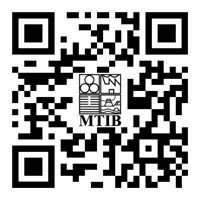ENTRY INTO FORCE OF ASEAN TRADE IN GOODS AGREEMENT (ATIGA)
ATIGA was signed in Hua Hin on 26 February 2009 during the 14th ASEAN Summit Meeting and came into force of the ASEAN Trade in Goods Agreement (ATIGA) on 17 May 2010. The objectives of ATIGA are:
- To be on par with key principles of the Trade In Goods (TIG) Agreements with Dialogue Partners;
- Set out disciplines in implementing the commitments and obligations in ASEAN such as elimination and reduction of import duties, removal of Non-Tariff Barriers (NTBs) and enhanced transparency in the concessions granted;
- Ensure consistency of the provisions that are currently stated in the various agreements, documents, decisions of the AFTA Council and the ASEAN Economic Ministers (AEM) Meeting; and
- Provide a legal framework that will realise the free flow of goods in the region, with a view to establishing a single market and production base by 2015.
- The ATIGA Form D instead of CEPT Form D for exports to Brunei, the Philippines, Singapore and Thailand effective 17 May 2010; and
- For Cambodia, Indonesia, Lao PDR, Myanmar and Viet Nam, the ATIGA Form D effective 1 July 2010.
- The ATIGA value-adds to the Common Effective Preferential Tariff ASEAN Free Trade Area (CEPT-AFTA) Agreement of 1992 in terms of inclusion of disciplines on Technical Barriers to Trade (TBT), Sanitary and Phytosanitary (SPS) Measures as well as Temporary Modification and Suspension of Concessions. The Article on Temporary Modification and Suspension of Concessions provides guidelines for compensation as a remedy for losses arising from any modification of existing commitments. The ATIGA enhances the CEPT-AFTA Agreement of 1992 where it value adds the existing CEPT Agreement with new initiatives such as:
- Comprehensive coverage in Trade in Goods;
- Consolidated and streamlined rights and obligations;
- Full tariff reduction schedules;
- Streamlined provisions on modification of concessions and trade remedies:
- Non-Tariff Measures;
- Trade facilitation and related chapters; and
- Trade repository.
- minimise barriers and deepen economic linkages among AMS;
- lower business costs;
- increase trade, investment and economic efficiency;
- create a larger market with greater opportunities and larger economies of scale for the businesses of AMS; and
- create and maintain a competitive investment area.
 Bahasa Melayu
Bahasa Melayu 

 English
English